|
Elisabeth
HUTCHINSON & Laura GAISFORD
Elizabeth HUTCHINSON,
Née à Cawnpore,
Inde, le 11 novembre 1830,
fille de George MONTIER et de Elizabeth HARRINGTON. Elle était veuve du Général
Charles W. Hutchinson et en 1905, elle habitait Craighdu (Ecosse). Elle se
rendait à Dinard où elle avait loué une maison en compagnie de sa fille Laura
qui y résidait.
Born in Cawnpore, India, Nov.11, 1830, she was the daughter of George MONTIER and Elisabeth HARRINGTON. In
1905, widow of the late General Charles W. HUTCHINSON, she was living in
Scotland at Craighdu and was travelling to Dinard where she had rented a house
in company of her daughter Laura who was already living there.
|
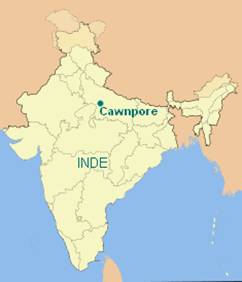
|
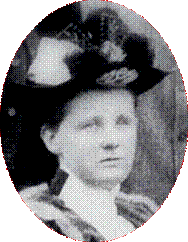
Laura GAISFORD
|
Laura GAISFORD,
Née en 1866, elle vivait à l’année à Dinard. Elle
avait 3 enfants, deux garçons scolarisés en GB et une fille qui vivait avec
elle mais qui était restée à Dinan chez des amis en attendant son retour. Elle était veuve du Lieutenant Colonel
Gilbert GAISFORD, agent politique de l’Indian Staff Corps qui avait été
assassiné à Smallan (aujourd’hui au Pakistan) le 15.3.1898 par un fanatique
indien. Les deux garçons allaient l'un et l'autre épouser le métier des armes.
Lionel, le premier était Lieutenant quand il fut tué au combat à Festubert le 23
novembre 1914. Il est inhumé au cimetière militaire de Béthune. Son frère,
Phillip allait devenir Lieutenant Colonel. Il a été annobli en 1942 (Sir
Phillip) lorsqu'il fut fait Chevalier de l'Ordre de l'Empire Indien.
Born in 1866, she was
living in 1905 all year long in Dinard. She had 3 children, 2 boys at school in
GB and a girl who was living with her but who had remained in Dinan at friends
home until her mother’s return. She was widow of Lieut. Colonel Gilbert
CAISFORD, political agent of the Indian Staff Corps who had been murdered at
Smallan (now Pakistan)
by a fanatic indian on 15.3.1898. The two boys were to become Army officers ;
Lionel the first one was killed in action at Festubert on Nov. 23rd, 1914 and
buried at Bethune. His brother Phillip became a Lieut.Colonel and was made
Knight in the Order of Indian Empire.
|
Lieutenant-Colonel Gilbert GAISFORD -
I.S.C.
- assassiné le 15 Mars 1898.
Inhumé à Quetta, sa
tombe porte l'inscription suivante :
« En mémoire
de Gilbert Gaisford, Lieutenant Colonel I.S.C. – Agent politique, Thal Chotiali.
Tué par un fanatique à Smallan le 15 Mars 1898 à l’âge de 48 ans ».
Quetta se trouve à
environ 80km dans l’ouest de Smallan, Pakistan.
Lieutenant-Colonel Gilbert GAISFORD -
I.S.C.
- killed 15th March 1898.
Buried at Quetta,
his grave stone wears the following inscription :
"In loving memory of Gilbert Gaisford. Lieutenant
Colonel ISC. Political Agent, Thal Chotiali. Killed by a fanatic at Smallan 15
March 1898. Aged 48 years."
Quetta is about 80km W of Smallan, Pakistan.
Thal
Chotiali est une vallée proche de Quetta – Thal Chotiali is a valley close
to Quetta
|
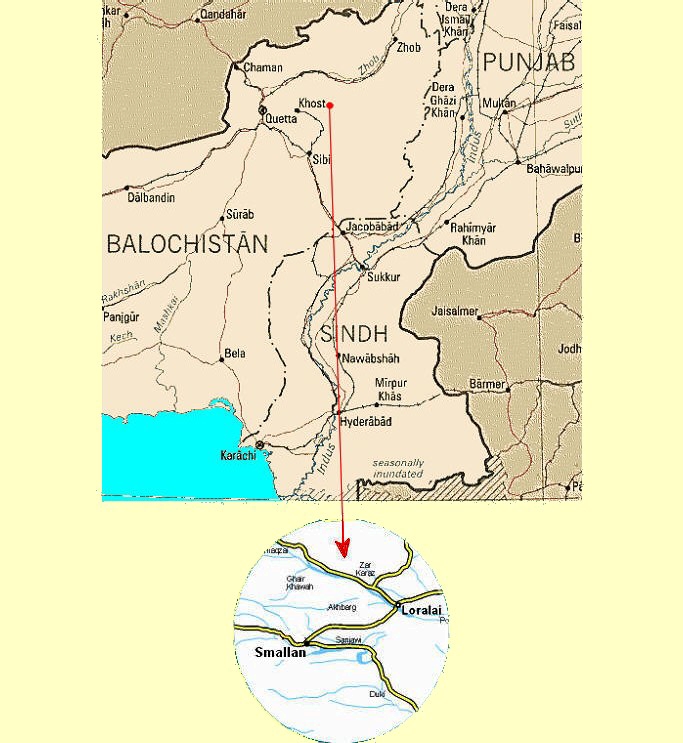
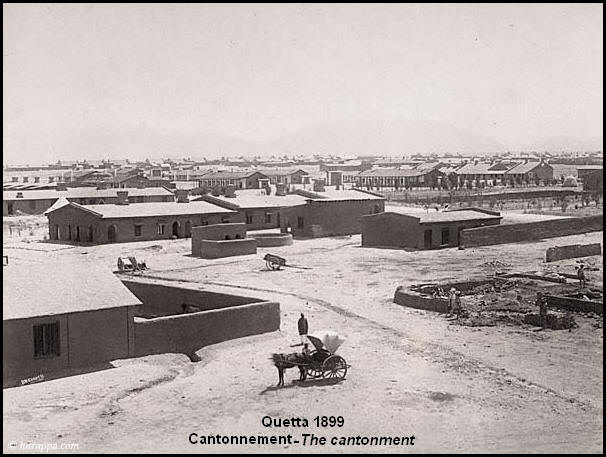
|
En juin 1857, Cawnpore et sa région
avaient connu de graves troubles durant ce qui fut appelé « la révolte des
Cipayes » et qui pour les
historiens marque le début de la lutte pour l’indépendance de l’Inde. Cet
épisode dramatique qui se déroula sur les lieux où naquit Mme Hutchinson est
relaté ci-dessous. On peut cependant tenir pour quasi certain qu’elle n’y
vivait plus à cette date.
In June 1857, the Cawnpore area had
known serious troubles during what was to be called “ the sepoy Rebellion”
marking for historians the beginning of India’s independence wars. Those
tragic events that happened at Mrs Hutchinson’s birth place are related below.
However, we can more likely assume that she was no longer living there when the
events occurred.
|
1857
|
Juin
|
|
Lu
|
Ma
|
Me
|
Je
|
Ve
|
Sa
|
Di
|
|
1
|
2
|
3
|
4
|
5
|
6
|
7
|
|
8
|
9
|
10
|
11
|
12
|
13
|
14
|
|
15
|
16
|
17
|
18
|
19
|
20
|
21
|
|
22
|
23
|
24
|
25
|
26
|
27
|
28
|
|
29
|
30
|
|
|
|
|
|
|
July
|
|
Mo
|
Tu
|
We
|
Th
|
Fr
|
Sa
|
Su
|
|
|
|
1
|
2
|
3
|
4
|
5
|
|
6
|
7
|
8
|
9
|
10
|
11
|
12
|
|
13
|
14
|
15
|
16
|
17
|
18
|
19
|
|
20
|
21
|
22
|
23
|
24
|
25
|
26
|
|
27
|
28
|
29
|
30
|
31
|
|
|
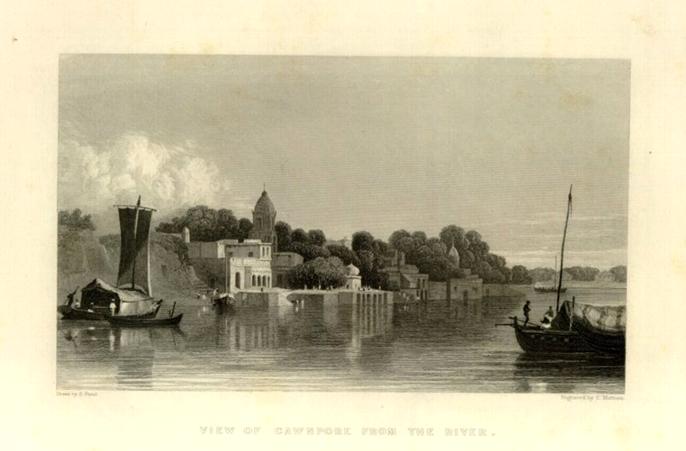
Cawnpore vue du Gange
|
En Juin, les cipayes de Cawnpore commandés par le
Général Wheeler, se rebellaient et assiégeaient le camp retranché européen.
Wheeler qui était un vétéran et un soldat respecté était marié à une femme
indienne de caste élevée. Il comptait sur son prestige personnel et ses
relations cordiales avec leur chef Nana Sahib pour étouffer la révolte en
conséquence, il avait comparativement pris peu de mesures pour fortifier le
camp et l’approvisionner en vivres et munitions.
Les Britanniques subissaient alors trois
semaines de siège à Cawnpore avec peu d’eau et de nourriture, enregistrant régulièrement
des pertes parmi les hommes, les femmes et les enfants. Le 25 Juin, Nana
Sahib faisait une proposition de reddition en termes plutôt généreux que
Wheeler n’avait d’autre choix qu’accepter. Nana Sahib disait être d’accord
pour garantir un passage en sécurité jusqu’à Allahabad. Mais le 27 Juin,
alors que les Britanniques avaient quitté leur camp fortifié pour rejoindre
les embarcations promises sur le fleuve, une fusillade éclatait. Qui tira le
premier ? La réponse fait toujours débat.
Selon les Indiens, les Anglais avaient déjà pris
place dans les bateaux et le général rebelle Tatya Tope avait levé la main
droite pour donner le signal de départ. C’est à ce moment précis que
quelqu’un dans la foule sonnait du clairon ce qui provoquait un mouvement de
désordre et dans la pagaille qui s’ensuivit, les hommes chargés de manœuvrer
les embarcations sautaient à l’eau. Les soldats et les officiers anglais qui
avaient toujours leurs armes et des munitions, tiraient alors sur eux. Les
rebelles perdant toute patience ouvraient le feu à leur tour sans
discernement. Nana Sahib qui s’était retiré momentanément à Savada Kothi dans
un bungalow proche recevait le message et accourait pour faire cesser le feu.
Les hommes qui restaient furent néanmoins abattus pour éviter toute reprise
des troubles.
|
In June, sepoys under General Wheeler in Cawnpore, rebelled and besieged the European
entrenchment. Wheeler was not only a veteran and respected soldier, but also
married to a high-caste Indian lady. He had relied on his own prestige, and
his cordial relations with the Nana Sahib to thwart rebellion, and took
comparatively few measures to prepare fortifications and lay in supplies and
ammunition.
The British endured three weeks of the Siege of Cawnpore with little water or food, suffering
continuous casualties to men, women and children. On June 25 the Nana Sahib
offered fairly generous surrender terms, and Wheeler had little choice but to
accept. The Nana Sahib agreed to let them have safe passage to Allahabad but on June 27
when the British left their fortified barrack buildings to board the promised
riverboats, firing broke out. Who fired first has remained a matter of
debate.
The Indians claim that the British had already
boarded the boats and Tatya Tope raised his right hand to signal their
departure. That very moment someone from the crowd blew a loud bugle which
created disorder and in the ongoing bewilderment, the boatmen jumped off the
boats. British soldiers and officers still had their arms and ammunition and
they fired shots at these boatmen. The rebels lost all patience and started
shooting indiscriminately. Nana Sahib, who was momen-tarily staying in Savada
Kothi (Bungalow) nearby, got the message and immediately came to stop it. The
remaining men were, however, killed to ensure no further unrest.
The British claim that during the march to the
boats, loyal sepoys were removed by the mutineers and lynched along with any
British officer or soldier that attempted to help them, although these
attacks were ignored in an attempt to reach the boats safely. After firing
began the boats' pilots fled, setting fire to the boats, and the rebellious
sepoys opened fire on the British soldiers and civilians.
|
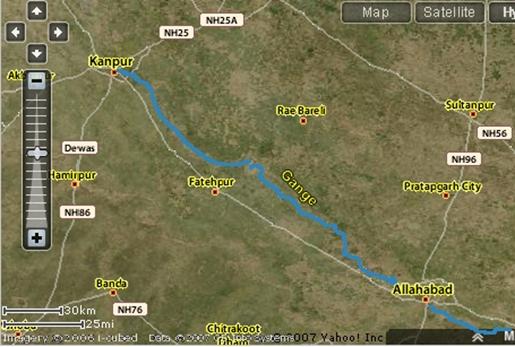
|
Cawnpore (Kanpur) –
Allahabad |
|
Environ 200 kms par le
fleuve - About 125 miles down the river
|
|
Selon les Britanniques, pendant la marche en
direction des bateaux, des cipayes
restés loyaux étaient extraits de leurs rangs par les mutins et tabassés avec
les officiers et les soldats anglais qui tentaient de s’y opposer. Toutefois,
ces aggressions avaient été ignorées dans le but de rejoindre les bateaux en
sécurité. Après que la fusillade ait débuté, les pilotes des bateaux
s’étaient enfuis en y mettant le feu et les rebelles cipayes avaient tiré sur
les soldats anglais et les civils. L’un des bateaux avec une douzaine de
blessés était parvenu à s’échapper mais s’était échoué et avait alors été
repoussé par les mutins en direction du carnage de Cawnpore. Les femmes qui
étaient à bord avaient été prises en otage tandis que les blessés et des
hommes âgés étaient collés à la hâte dos au mur et fusillés. Seuls 4 hommes
parvenaient à s’échapper vivants de Cawnpore avec un des bateaux : deux
soldats (qui devaient décéder plus tard durant la Rébellion), un
Lieutenant et le Capitaine Mowbray Thomson qui allait ensuite écrire le récit
de son expérience dans « L’histoire de Cawnpore » (Londres, 1859).
Etant donné que les Britanniques assiégés étaient
déjà en train de succomber, il apparaît illogique que Nana Sahib après avoir
garanti un départ en sécurité ait ensuite ordonné le massacre.
|
One boat with over a dozen wounded men initially
escaped, but later grounded, was caught by mutineers and pushed back down the
river towards the carnage at Cawnpore. The
female occupants were removed and taken away as hostages and the men,
including the wounded and elderly, were hastily put against a wall and shot.
Only four men eventually escaped alive from Cawnpore on one of the boats: two
privates (both of whom died later during the Rebellion), a Lieutenant, and
Captain Mowbray Thomson, who wrote a firsthand account of his experiences
entitled “The Story of Cawnpore” (London
1859).
Given that the British were already dying, it defies
logic as to why Nana Sahib would offer a safe passage and then order the
alleged massacre.
The surviving women and children from the massacre
by the river were led to the Bibi-Ghar (the House of the Ladies) in Cawnpore. On July 15, with British forces approaching Cawnpore and some believing that they would not advance
if there were no hostages to save, their murders were ordered. Another motive
for these killings was to ensure that no information was leaked to the
British after the fall of Cawnpore.
|
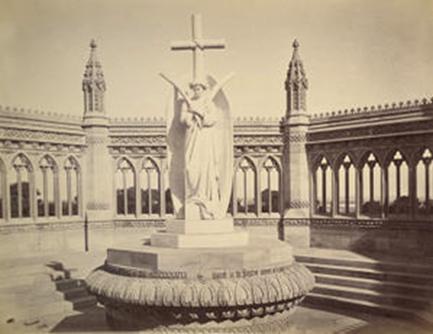
|
Memorial érigé vers 1860
sur le puits du Bibi-Gahr après que la mutinerie ait été matée.
|
|
A memorial erected circa 1860 at the Bibi Ghar Well
after the Mutiny was crushed. |
|
Les femmes et les enfants qui avaient survécu au
massacre du fleuve furent conduits à la Bibi-Ghar (Maison des Femmes) de Cawnpore. Le
15 Juillet alors que les forces anglaises approchaient de Cawnpore, certains
pensaient qu’elles n’avanceraient pas s’il n’y avait plus d’otages à sauver
et il fut ordonné de les exécuter. Une autre raison pour justifier ces
meurtres était qu’aucune information ne devait parvenir aux Britannqiues après
la chute de Cawnpore. Après que les cipayes aient refusé d’exécuter cet
ordre, quatre bouchers du marché local étaient appelés à Bibi-Gahr où ils
procédaient dit-on au meurtre des otages avec des hachoirs. Les morts et les
mourants avaient ensuite été jetés dans un puits proche.
Ce meurtre des femmes et des enfants s’avéra être
une erreur politique. La population anglaise était atterrée et les défenseurs
des Indiens perdirent tout soutien. Cawnpore allait devenir un cri de guerre
pour les Britannqiues et leurs Alliés pour le reste du conflit. Nana Sahib
pour sa part disparut vers la fin de la Rébellion.
L’interprétation selon laquelle les représailles
anglaises auraient été atroces seulement après les évènements de Cawnpore et
de Bibi-Ghar est délibérée dans certains récits. D’autres récits anglais font
état de mesures punitives discriminatoires prises début Juin, deux semaines
avant les meurtres de Bibi-Ghar, en particulier par le Lieutenant Colonel
James George Neill des Madras Fusiliers (une unité européenne) qu’il
commandait à Allahabad, pendant qu’il faisait mouvement vers Cawnpore. Dans
la ville proche de Fatehpur, un assaillant avait disait-on assassiné la
population anglaise locale. Sur ce prétexte, Neill avait explicitement
ordonné de bouter le feu à tous les villages proches de Grand Truk Road et de
pendre leurs habitants. Les méthodes de Neill étaient « brutales et
horribles » et pouvaient bien avoir incité précédemment les cipayes
indécis et les communautés à la révolte.
Neill fut tué au combat à Lucknow le 26 Septembre
et n’eut jamais à répondre de ces exactions. Certaines sources anglaises
contemporaines firent même de Neill et de ses « braves casquettes
bleues », des héros. Par contraste avec le comportement des hommes de
Neill, le comportement de la plupart des soldats rebelles est à leur crédit.
« Nos croyances ne nous permettent pas de tuer un prisonnier mais
nous pouvons tuer notre ennemi dans la bataille », expliquait l’un
d’entre eux.
Quand le 18 Juillet les Anglais reprirent
Cawnpore, les soldats conduisirent leurs prisonniers cipayes jusqu’au
Bibi-Ghar et les obligèrent à lécher les traces de sang sur les murs et le
sol. Ensuite, ils pendirent ou « désintégrèrent au canon » la
majorité d’entre eux. Bien que selon certains, les cipayes n’aient pas pris
part aux meurtres eux-mêmes, ils n’avaient rien fait pour les empêcher ce qui
fut confirmé par le Capitaine Thompson après que les Anglais eurent quitté
Cawnpore la seconde fois.
|
After the sepoys refused to carry out this order,
four butchers from the local market went into the Bibi-Ghar where they
proceeded to allegedly murder the hostages with cleavers and hatchets. The
dead and the dying were then thrown down nearby a well.
The alleged killing of the women and children proved
to be a mistake. The British public was aghast and the pro-Indian proponents
lost all their support. Cawnpore became a
war cry for the British and their allies for the rest of the conflict. The
Nana Sahib disappeared near the end of the Rebellion.
The misinterpretation that British retaliation was
ghastly only after the events of Cawnpore
and the Bibi Ghar is deliberate in some accounts. Other British accounts
state that indiscriminate punitive measures were taken in early June, two
weeks before the murders at the Bibi-Ghar, specifically by Lieutenant Colonel
James George Smith Neill of the Madras Fusiliers (a European unit),
commanding at Allahabad while moving towards Cawnpore. At the nearby town of Fatehpur, a mob had
allegedly mur-dered the local British population. On this pretext, Neill
explicitly ordered all villages beside the Grand Trunk Road to be burned, and
their inhabitants to be hanged. Neill's methods were "ruthless and
horrible" and may well have induced previously undecided sepoys and
communities to revolt.
Neill was killed in action at Lucknow on September 26 and was never
called to account for his punitive measures, though contemporary British
sources lionised Neill and his "gallant blue caps". By contrast
with the actions of soldiers under Neill, the behaviour of most rebel
soldiers was creditable. "Our creed does not permit us to kill a bound
prisoner", one of the matchlockmen explained, "though we can slay
our enemy in battle."
When on the 18th of July, the British retook Cawnpore, the soldiers took their sepoy prisoners to
the Bibi-Ghar and forced them to lick the bloodstains from the walls and
floor. They then hanged or "blew from the cannon" the majority of
the sepoy prisoners. Although some claimed the sepoys took no actual part in the
killings themselves, they did not act to stop it and this was acknowledged by
Captain Thompson after the British departed Cawnpore
for a second time.
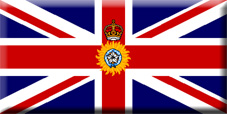
Le drapeau indien de
l’époque
- India’s flag at the time
|
|
Exécution au canon de certains rebelles cipayes
Blowing from the cannon
of some sepoy rebels
|

|
|
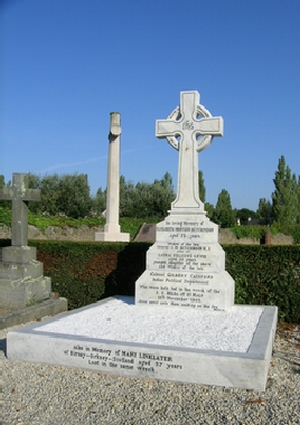 |
Mme
Hutchinson et sa fille Laura dont les corps furent retrouvés sur la plage de
Saint Cast sont inhumées au cimetière de Dinard où leur tombe est toujours
parfai-tement entretenue.
Mrs
Hutchinson and her daughter Laura whose bodies were recovered at Saint Cast
are buried in Dinard cemetery where their grave is still beautifully
maintained.
|
|
Lieutenant Lionel (Jack) GAISFORD
|
|
| |
|
| |
|
Fils ainé
|